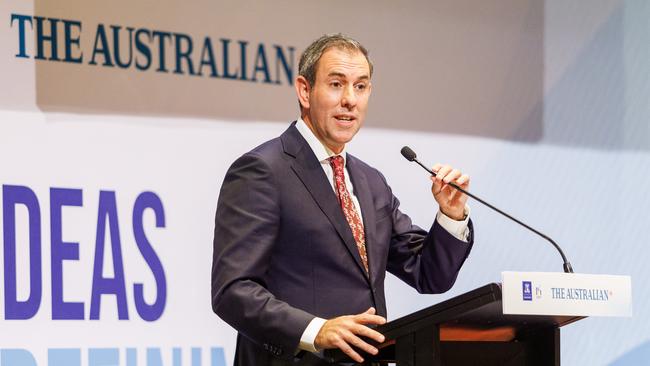Jim Chalmers plays down need for RBA hike
Jim Chalmers says the recent acceleration in consumer price pressures has only led to a “modest” lift in Treasury‘s inflation forecasts.

Jim Chalmers says the recent acceleration in consumer price pressures has only led to a “modest” lift in Treasury‘s inflation forecasts, mere days ahead of an RBA board meeting that could deliver the 13th rate hike in 18 months.
Economists anticipate that last week’s hot consumer price report for the three months to September has provided the “material” change to the inflation outlook that RBA governor Michele Bullock has said would be the trigger for restarting the rate-hike cycle after pausing for four months.
But the Treasurer, in a speech at The Australian-Melbourne Institute Outlook Conference 2023, again pushed back against that interpretation, even as he restated his commitment to the independence of the central bank.
“Treasury was already preparing for a modest revision of the near-term inflation forecasts before last week’s new numbers, recognising the upward pressure which came from earlier decisions by global oil producers to wind back supply,” he said.
“In particular, global oil prices have remained higher than Treasury had expected since the end of the September quarter. Combined with the escalating conflict in the Middle East, this means that inflation is likely to be more volatile in the near term. But there was nothing additional or unexpected in the September quarter CPI which materially altered Treasury’s expectations for when inflation will return to the target band.
“Which is why I said the September quarter result didn’t represent a material change to Treasury’s outlook for inflation – while being really careful not to speak for the Reserve Bank, which will come to its own view on the outlook for inflation, independently and appropriately and in time.”
With the central bank widely expected to again tighten policy to further slow the economy, Westpac chief economist Luci Ellis said it was possible that the country could accommodate an unemployment rate of below 4 per cent without triggering unsustainable wage growth and inflation.
Ms Bullock in June sparked outrage among union groups when she said, based on the bank’s forecasts, unemployment “will have to rise” to about 4.5 per cent, from near 50-year lows of about 3.5 per cent, to bring inflation back under control. This matched the RBA’s estimate that the non-accelerating inflation rate of unemployment (NAIRU) – the lowest sustainable level of the jobless rate consistent with achieving the RBA’s 2-3 per cent inflation target over time – was in the mid-4s.
Ms Ellis flagged that estimating the NAIRU was not an exact science.



